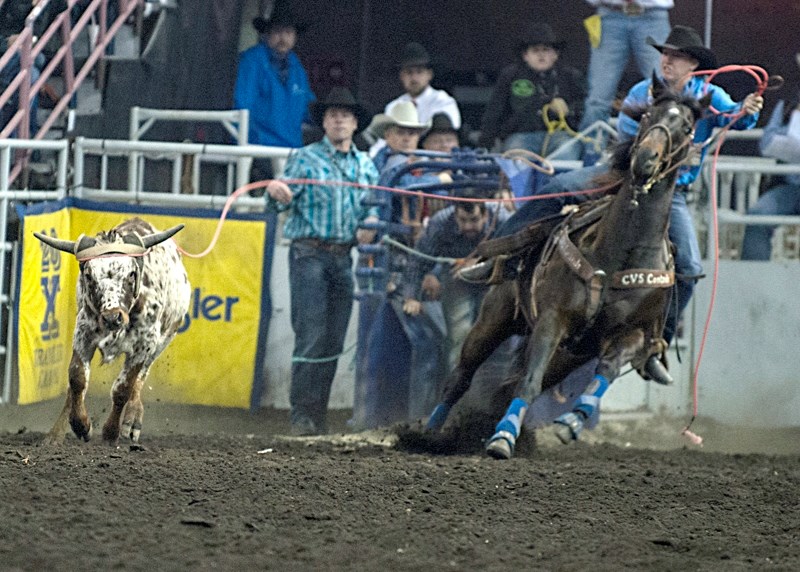It has been a disappointing rodeo season for Barrhead native Kolton Schmidt.
Currently after competing in about 50 rodeos Schmidt, along with partner Dugan Kelly, from Paso Robles, California, ranked seventh in Canada in team roping, down from last year when they were ranked third in Canada and 10th in the world.
The Leader caught up to Schmidt while he was driving to Edmonton on a rare day-off, two days after competing in the city’s inaugural K-Days Rodeo, July 22.
“I didn’t do very good,” he said, adding the team didn’t qualify for the final competition. “This season we are doing OK, but we are not where we would like to be that’s for sure.”
The good news is that Schmidt and Kelly have a lot of time to move up in the rankings. During the rodeo season, which goes from January to October, the pair competes in about 100 rodeo across North America.
“It can be hectic that’s for sure and it doesn’t leave a whole lot of down time,” Schmidt said, adding he goes to two or three rodeos in a week and often the rodeos are hours apart.
For example, the next rodeo Schmidt competed in after K-Days was in Medicine Hat — results were not known at press time.
However, it is something he has become accustomed to after he started competing on the professional circuit in 2011, while simultaneously pursuing his post-secondary education at Western Oklahoma Jr. College and Southeastern Oklahoma State University.
In 2015, in his final year in university, Schmidt along with his then partner Sawyer Barham, won the national college rodeo championships.
Schmidt said he really did not have much of a choice but to become involved in the sport as he comes from a long line of rodeo people.
“My grandpa, Leonard Schmidt, my dad and his brothers are all into rodeo. It is something our family has always done, so I guess it’s in our blood,” Schmidt said. “I can’t think of anything I would rather do.”
In the team roping event a steer is released from the chute and a team of two ropers, on horses both attempt to rope the steer which is running loose in the rodeo arena.
The first roper, known as a header, ropes the front of the steer, usually around its horns, but sometimes as low as its neck. Once the steer is caught the header then wraps his or her rope around the horn on his saddle and then uses his horse to turn the steer to its left. While the header is doing this the heeler attempts to rope both of the steer’s back feet. Schmidt is the header on his team.



